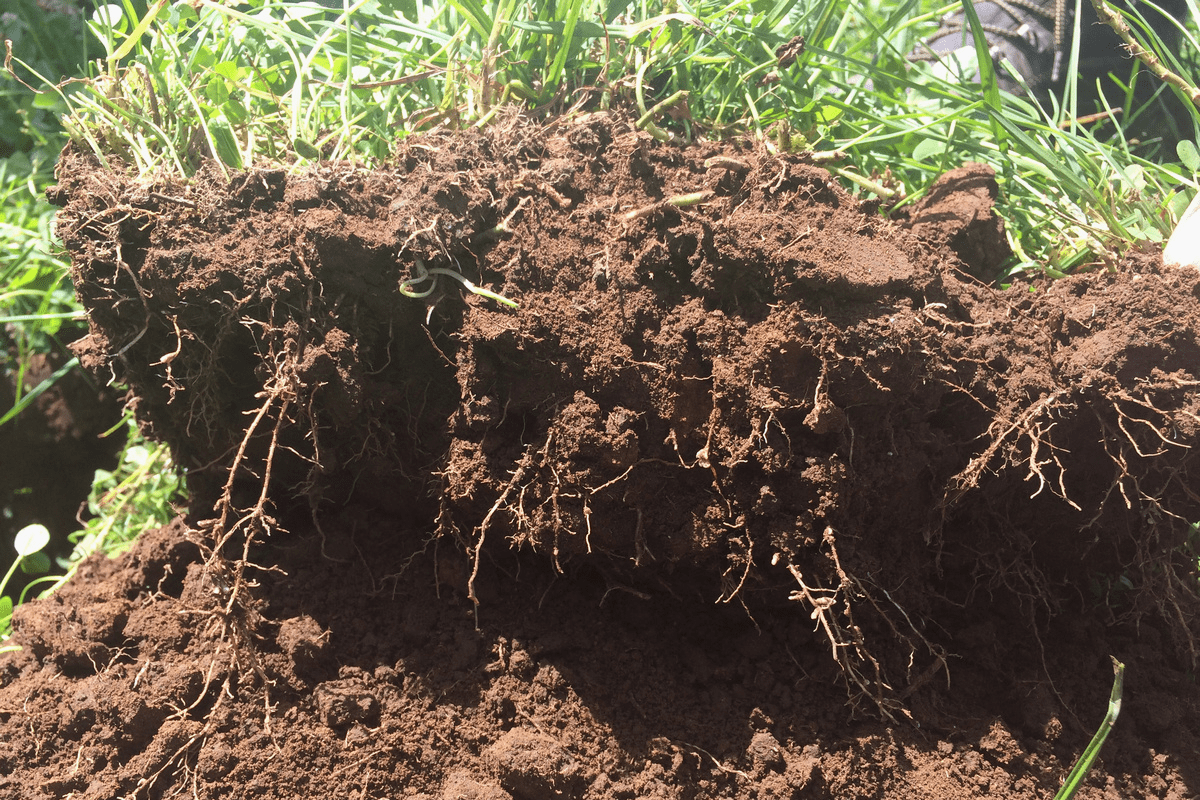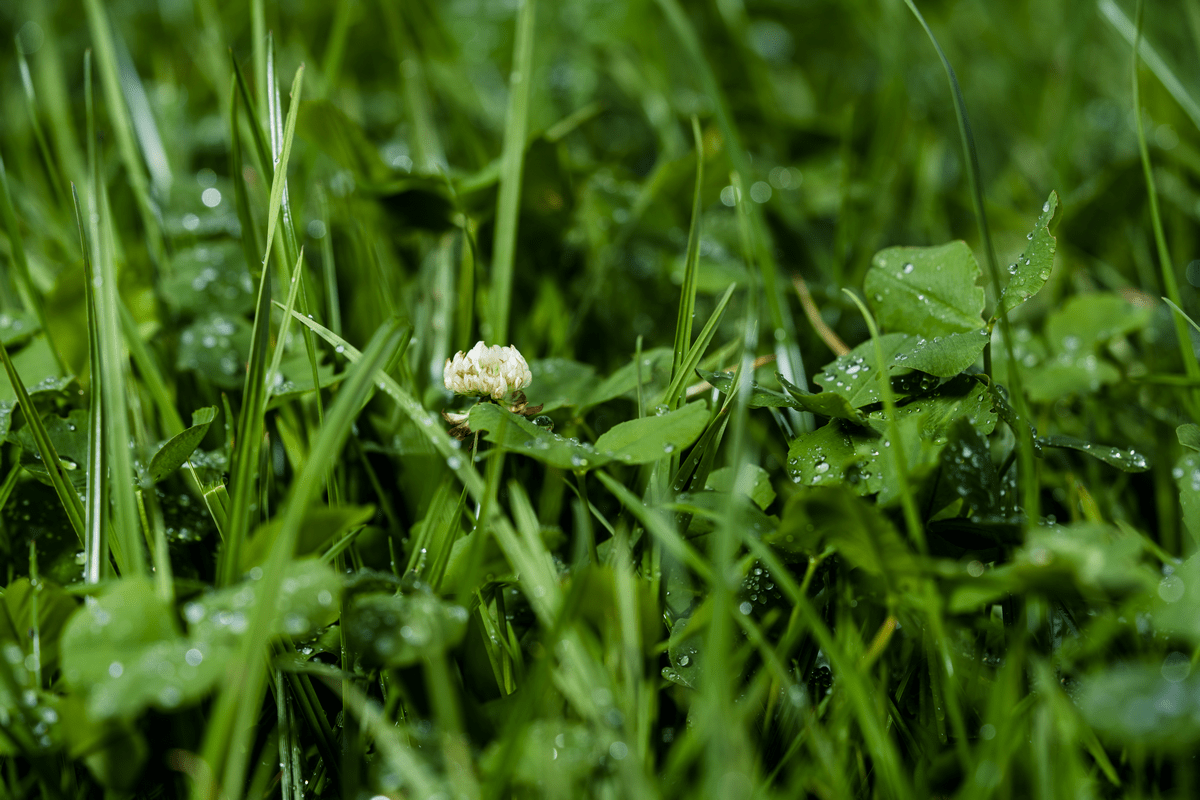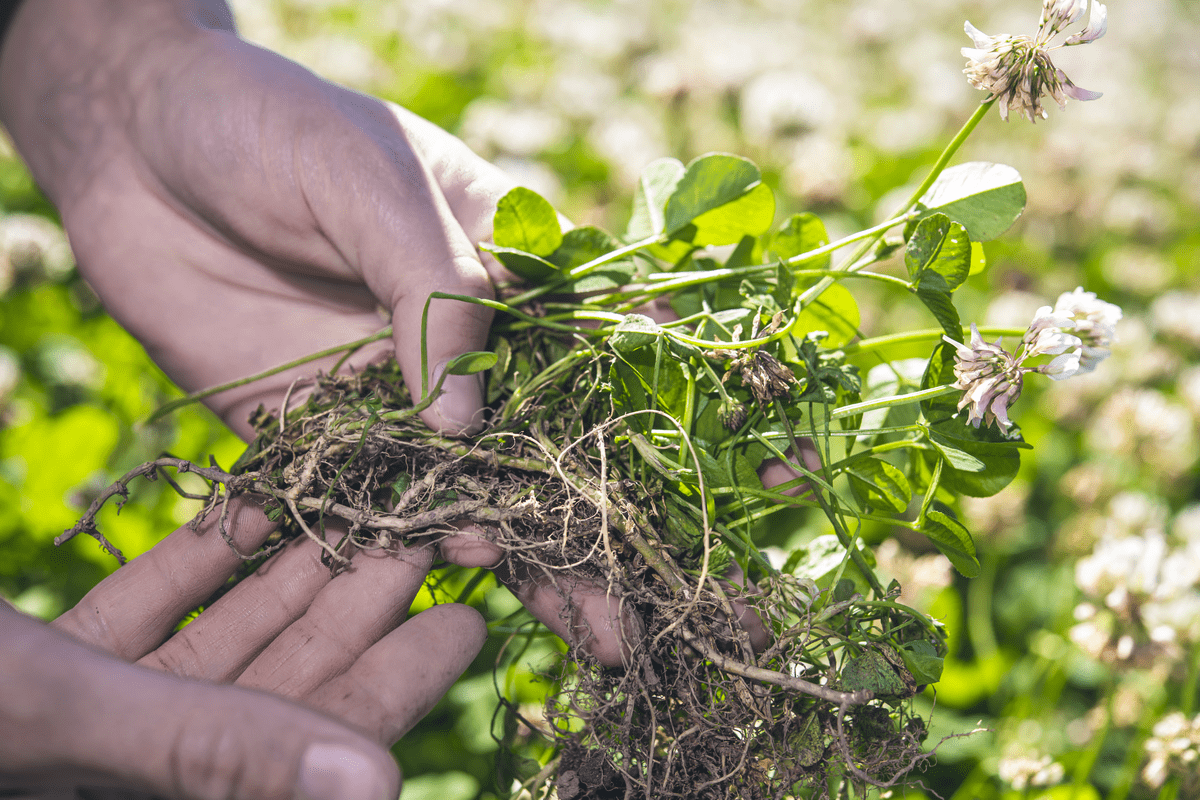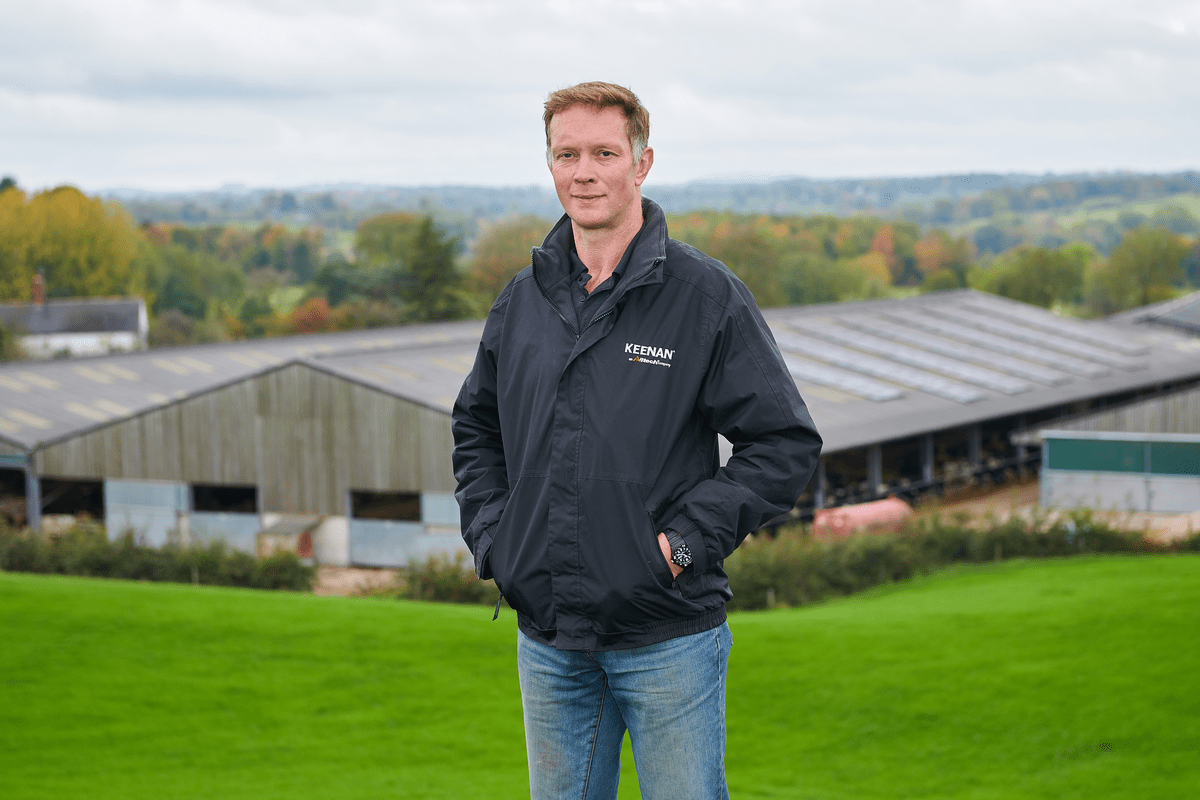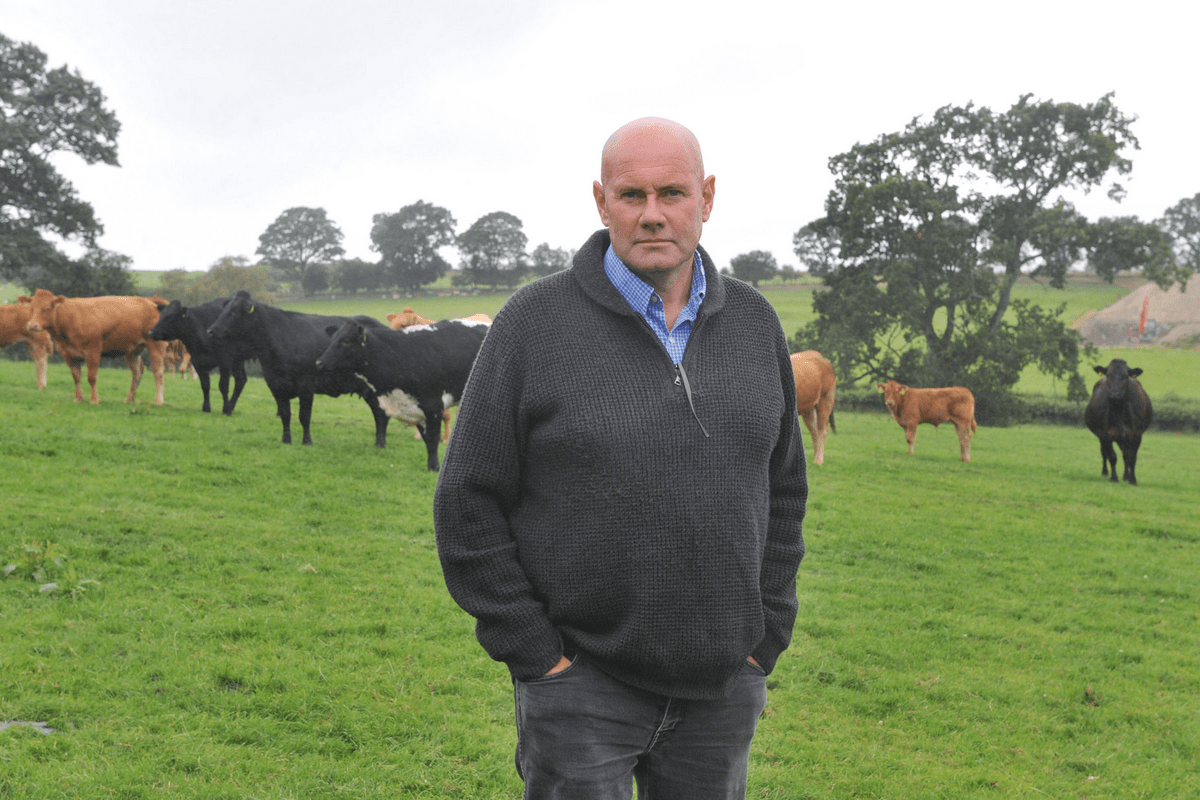Extreme weather caused by climate change is making life difficult for British farmers, who are also impacted by fertiliser costs. Increasingly, we are seeing farmers turning to nitrogen fixing clovers as alternative fertilisers to improve self-sufficiency in the face of these challenges.
This guide will cover the key talking points around clover’s nitrogen fixing properties.
What is nitrogen fixation in clover and why is it important in agriculture?
Nitrogen fixation is a biological process in which atmospheric N2 is converted into forms that can be used by the plant as a natural, cost-effective alternative to applied fertilisers. This process is specific to legumes, a select group of plants which includes clover. Clover fixed nitrogen also benefits companion grasses through transfer in soil and through animal returns.
How does clover fix nitrogen?
Nitrogen fixation is carried out by symbiotic rhizobia bacteria. These bacteria colonise specialised structures called root nodules. The clover plant supplies carbohydrates to the rhizobia which are used to convert atmospheric nitrogen into a form that can be utilised by the plant.
How much nitrogen does clover fix?
When managed carefully to maintain a clover content of 25-30% in a sward, nitrogen fixation rates can average 150 kg N/ha/year. When this is achieved, nitrogen fertiliser application rates can be significantly reduced with clover/grass swards supplied with as little as 100 kg N/ha. This is as productive as, or more productive than, grass monocultures at 250 kg N/ha.
Why nitrogen is required for grass growth and forage crops
Nitrogen, along with phosphorus and potassium, is an essential macronutrient of plants. It is a key component of proteins, nucleotides and plays a major role in metabolism.
Growing crops depletes the soil of nitrogen which needs to be replaced for soil to remain fertile. Several options are open to farmers, including the application of industrially produced fertilisers.
However, this has a large carbon footprint, with 3.3 tonnes of CO² equivalents being produced in the EU (9-11 tonnes for China) for each tonne of N fertiliser using even the most efficient processes. This CO² is derived from fossil fuels and has a major impact on the environment.
Clover is a sustainable substitute for nitrogen fertiliser
While nitrogen fertiliser has been used successfully by farmers to improve productivity and profit, its case has weakened in recent years. The recognition of the environmental cost of fertiliser production and transport, along with soaring nitrogen fertiliser costs has highlighted the detrimental effects of nitrogen fertiliser use.
Nitrous oxide emissions
In addition to the environmental cost of production and transportation, the application of nitrogen fertilisers is associated with nitrous oxide emissions.
N2O is a potent greenhouse gas with 265 times the atmospheric warming potential of CO² on a per-molecule basis. It is also the single most important ozone-depleting emitted gas. In the face of this challenge, increasing numbers of British farmers are using clover as a natural and sustainable nitrogen supply.
Ammonia emissions
Also of concern is ammonia (NH3), an air pollutant known to have a damaging impact on biodiversity, ecosystem resilience and human health.
Ammonia emissions are generated by many common farming practices, such as housing livestock, storing and spreading manure and slurries, and the application of nitrogen fertiliser. Reducing ammonia emissions in British agriculture is also vital.
The ammonia used in agriculture is produced by the Haber-Bosch process, which uses fossil natural gas generating 2.6 metric tonnes of lifecycle GHG emissions per metric tonne of ammonia produced.
Ammonia’s production accounts for approximately 2% of worldwide fossil energy usage and generates over 420 million tonnes of CO² annually. Increasing the use of nitrogen fixing clovers will mean fewer greenhouse gas emissions in the production and application of inorganic nitrogen fertiliser.
How to choose the best clover for nitrogen fixing?
Both red and white clover are nitrogen fixing and the choice should be made based on the needs of your farm.
Grazing: White clover and perennial ryegrass
White clover and perennial ryegrass are suitable for grazing swards. Compared with red clover, white clover is slightly higher in protein content.
However, red clover protein is naturally more stable than white clover protein due to the action of the enzyme polyphenol oxidase (PPO), which occurs naturally in red clover leaves.
This provides a degree of protection from degradation in the rumen and in the ensiling process and can be thought of as a natural bypass protein.
Grass and red clover silage
Perennial ryegrass and red clover can be combined to produce silage as an alternative.
Although white clover contains slightly more protein, red can have two-to-three times as much dry matter (DM) content. The combination of perennial ryegrass and red clover is well-suited in terms of timing when planning silage cuts.
Climate smart: DoubleRoot hybrid clover
Germinal’s DoubleRoot hybrid clover varieties provide a high-quality, homegrown protein option helping farmers work towards net zero goals.
Compared to conventional white clover varieties, this world-first, exclusive hybrid of white and Caucasian clovers is more resilient in the face of temperature and drought extremes caused by climate change.
DoubleRoot varieties such as AberLasting grow like traditional white clover in the first year. Individual plants form a deep taproot that dies off, stolons start to grow by spreading out and forming new plantlets along the stolons on the top of the soil.
After the first year, a network of rhizomes is created from underground stems, also forming new plantlets. With DoubleRoot, farmers can have a clover that produces both stolons and rhizomes.
This ensures DoubleRoot clovers can survive periods of drought that would eliminate conventional clovers. This hybrid clover can survive exposure to severe cold by withstanding harsh overnight temperatures of down to -30°C.
DoubleRoot will also tolerate harder grazing and mechanical damage. This gives farmers a more resilient clover that will continue to protect and regenerate soil in the face of extreme conditions.
How to grow clover and use it in your farming system
Different techniques can be used for the establishment of red and white clover, and the same goes for the management of these forage crops. Check out our clover management guides for more information.
Clover success stories on-farm
Tony and Michael Ball
Dairy farmer brothers Tony and Michael Ball have significantly cut back their artificial nitrogen use since 2021 after establishing red clover swards.
In March 2022, Tony and Michael used just 40 kg/ha of nitrogen and 45kg/ha, with no more artificial nitrogen used for the rest of the year.
Aled and Owain Rees
Aled and Owain Rees and their family run a 950-acre organic dairy operation in Wales. Clover’s nitrogen fixing abilities have been integral as inorganic fertiliser cannot be used on the farm, due to its organic status.
“We can’t use inorganic nitrogen fertiliser, so all our nitrogen comes from clover and our own slurry. And with fertiliser prices where they are, this is benefiting us financially,” Aled explains.
The Rees family’s ability to grow high-quality grass without nitrogen fertiliser is so impressive that this even resulted in Aled being awarded the 2022 Grassland Farmer of the Year by the British Grassland Society.
John Yeomans
John Yeomans is another Welsh farmer using clover for nitrogen fixation. John’s successful approach to livestock farming led to him being selected as a finalist in the 2022 British Farming Awards for the Grassland Farmer of the Year category.
“We’ve historically used clover but, given current fertiliser prices, we are trying to optimise its use. Mainly due to the nitrogen fixation,” John explains.
Ask Germinal about our nitrogen fixing clovers
Contact our grass and forage experts if you have any questions about utilising nitrogen fixing clovers as a sustainable fertiliser alternative.

